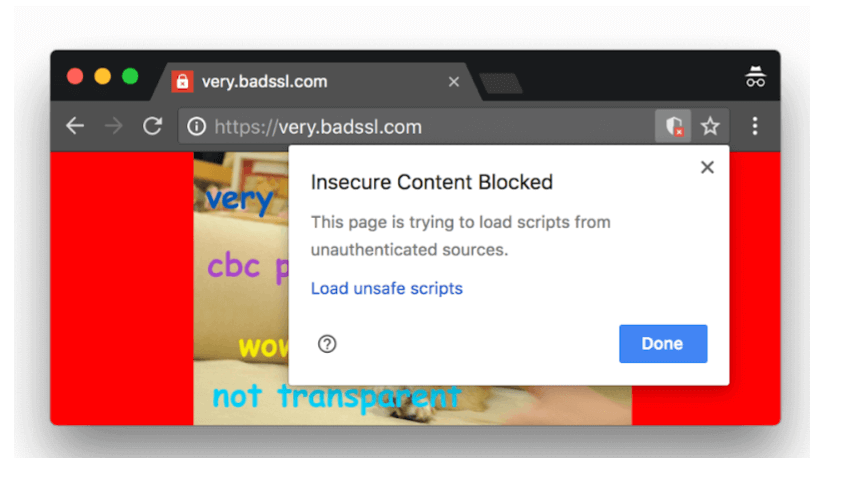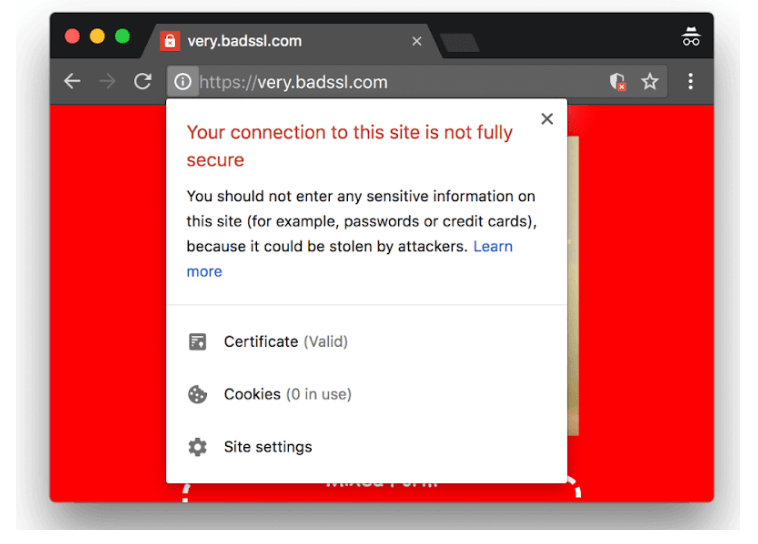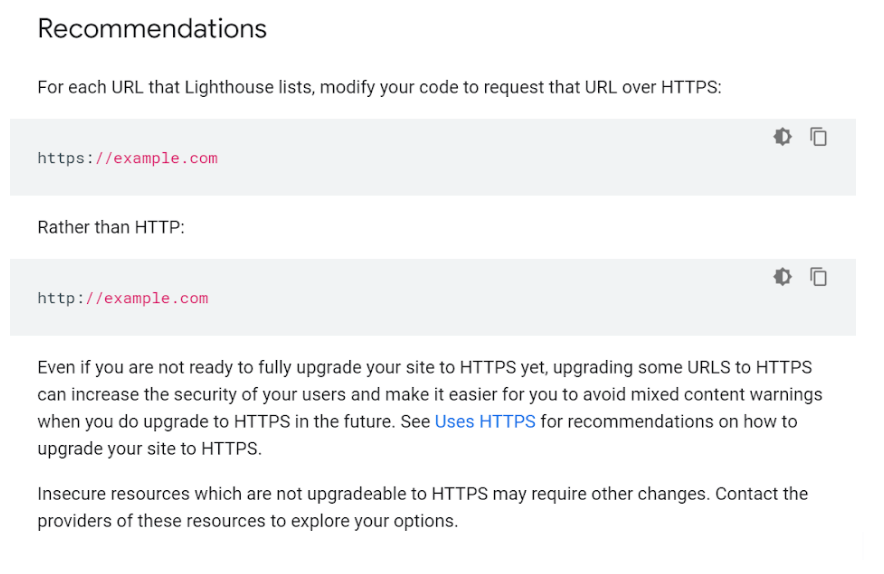Beginning in December 2019, Google will begin blocking mixed content from its search results. It’s imperative that SEO managers and site owners audit their code to ensure they aren’t violating this algorithm measure. Being blocked by Google could mean a tremendous drop in the search engine results rankings, so don’t delay when it comes to this audit.
What is Mixed Content?
Mixed content can be defined as secure sites (those that start with “https”) serving insecure protocols (“http”) when it comes to resources like images, JavaScript, video, and more. This sort of content presents a security risk to users of your site, so it stands to reason that Google would choose to limit its users’ exposure.
Here are some examples from the Google Developer blog of what users will see when your site is blocked:


In fact, it’s possible for would-be hackers to take control of your site using these insecure protocols. They can go beyond just hacking your images or scripts and actually use the mixed content to access the entire site. In this regard, you as the site owner are just as much at risk as potential users.
Google Chrome 79 Update
These changes will be unrolled as part of Google’s new Chrome 79 update this December. Once the update is live, and until January 2020, users will have the option to unblock insecure resources that the search engine has chosen to block. However, it is unlikely that all users will wish to take this risk. Once the new year rolls around, they will no longer be given the option.
In addition, the Chrome update will automatically upgrade any http content if the same resource exists on https. While this is a helpful addition if you don’t get your mixed content dealt with in time, a mixed content warning in search results is likely to steer potential site visitors away regardless. Once again, as soon as 2020 hits, blocking will be automatic.
How to Identify Mixed Content
If you are unsure whether your site contains mixed content, there are several steps you can take to determine if you’ll need updates.
First, check for mixed content using a tool like JitBit SSL Checker, which scans as many as 400 site pages and identifies problem areas. You can also use various plugins, like Really Simple SSL or Screaming Frog, to crawl your site, and some software will even fix it for you. These options may or may not be free, but the one-time fee or subscription cost will likely be worth the potential loss to your site traffic if you do nothing.
Importance of Removing Mixed Content
According to Google, Chrome users spend over 90% of their time browsing https sites on all the available platforms. This underscores the importance of removing mixed content from your clients’ sites. If you fail to do so, the sites will risk being blocked and seeing search traffic plummet.
Developers can edit your site and upgrade some URLs to run over https, even if you are unable to remove all mixed content immediately. Using the Chrome Canary tool and the Lighthouse option, it is possible to search for problem spots and edit code.
Here’s a screenshot from the Google Developer blog illustrating how to fix your code to avoid mixed content errors:


If you’re not sure how to proceed or simply don’t have the time, don’t worry. Forward this blog post to your site developer or try a DIY strategy, like using a site crawler and software like Really Simple SSL to correct mixed content for you. Going forward, be sure to use only https URLs and resources across your sites to ensure great rankings.


